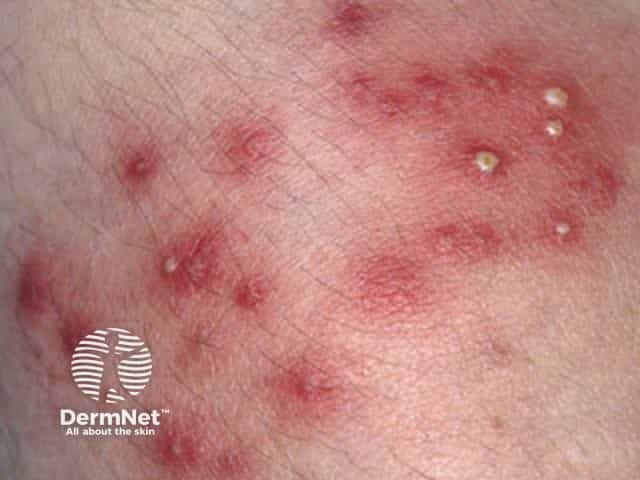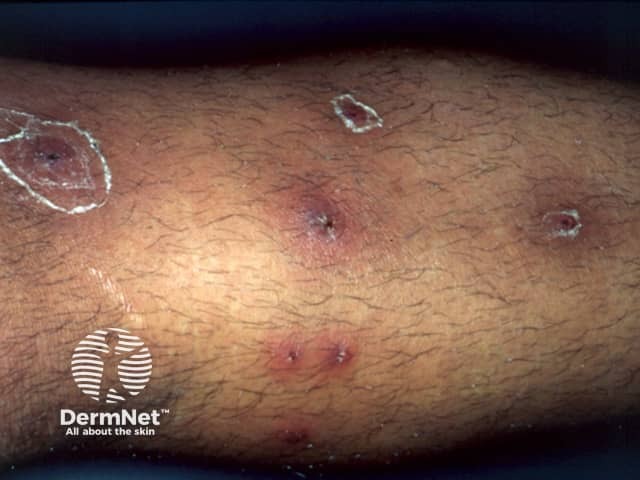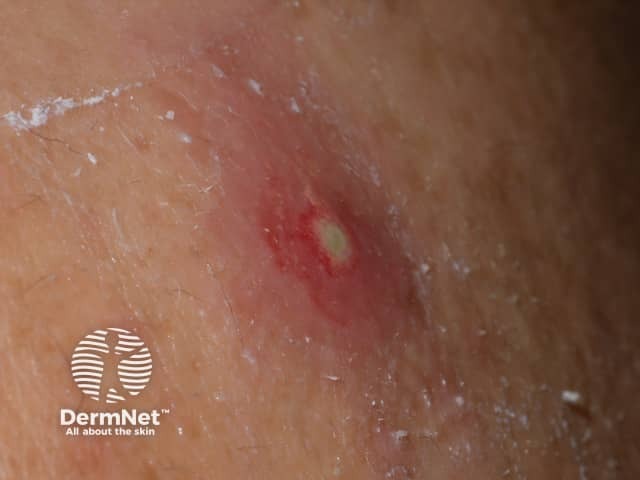Main menu
Common skin conditions

NEWS
Join DermNet PRO
Read more
Quick links
Infections Follicular disorder
Author: Hon. Assoc. Prof. Amanda Oakley, Dermatologist, Hamilton, New Zealand. September 2015. Reviewed and updated by Dr Jannet Gomez, Postgraduate student in Clinical Dermatology, Queen Mary University London, UK. January 2016.
Introduction
Causes
Demographics
Clinical features
Complications
Diagnosis
Prevention
Treatment
Folliculitis is inflammation of the hair follicle due to infection, chemical irritation or physical injury. Bacterial folliculitis is the most common form of folliculitis.
Bacterial folliculitis is usually due to Staphylococcus aureus. Less often, coagulase-negative staphylococci and gram-negative organisms are responsible including anaerobes. Spa pool folliculitis is caused by Pseudomonas.
Bacterial folliculitis affects children and adults, with adolescents and young adult males most often infected. It is prevalent worldwide.
The following factors predispose to bacterial folliculitis:
Bacterial folliculitis may be superficial or involve the whole hair follicle (a boil). It may arise on any body site but is most often diagnosed in the scalp, beard area, axilla, buttocks and extremities. Systemic symptoms are uncommon. Different types of bacterial folliculitis are described below.
Superficial staphylococcal folliculitis presents with one or more follicular pustules. They may be itchy or mildly sore. Superficial folliculitis heals without scarring.
A hordeolum or stye is bacterial folliculitis affecting an eyelash.
Furunculosis or boils presents as one or more painful, hot, firm or fluctuant, red nodules or walled-off abscesses (collections of pus). A carbuncle is the name used when a focus of infection involves several follicles and has multiple draining sinuses. Recovery leaves a scar.
Gram-negative folliculitis develops in individuals using long term antibiotics for acne. The infection with Gram-negative organisms causes pustules in acne sites of the face, neck and upper trunk.
Hot tub or spa pool folliculitis presents with painful papules and pustules on the trunk some hours after soaking in hot water, mainly in sites that were covered by bathing costume. It may be accompanied by mild systemic symptoms including fever. Untreated, it settles within about 10 days without scarring.

Superficial bacterial folliculitis

Superficial bacterial folliculitis


Bacterial folliculitis can lead to cellulitis and lymphangitis; subsequent bacteraemia might result in osteomyelitis, septic arthritis or pneumonia.
Bacterial folliculitis is usually diagnosed clinically but can be confirmed by bacterial swabs sent for microscopy, culture and sensitivity.
Blood count may reveal neutrophil leucocytosis when folliculitis is widespread.
Skin biopsy is rarely necessary. Histology shows dense neutrophilic infiltrate in the subcutaneous tissue and foreign body reaction around a hair shaft.